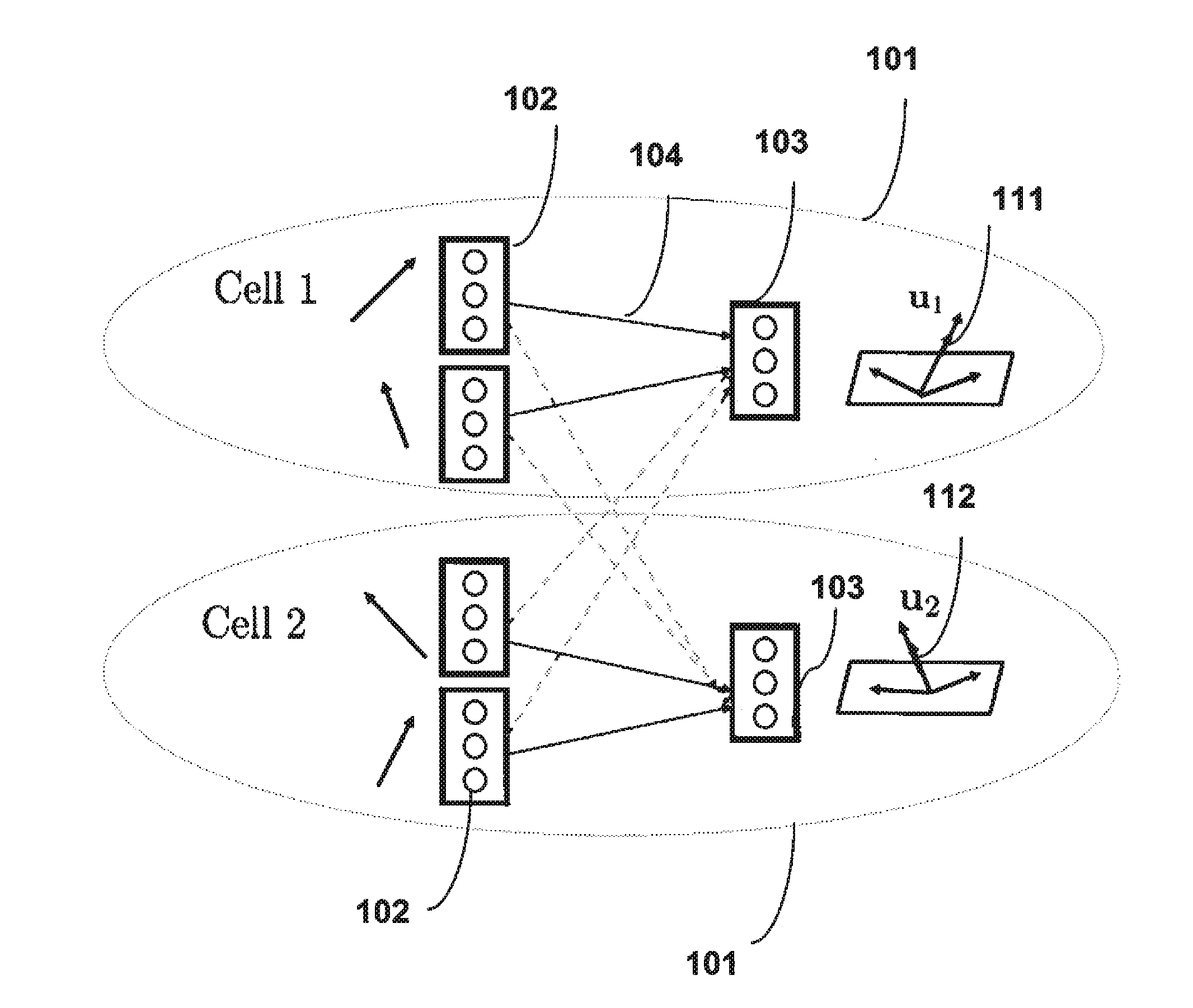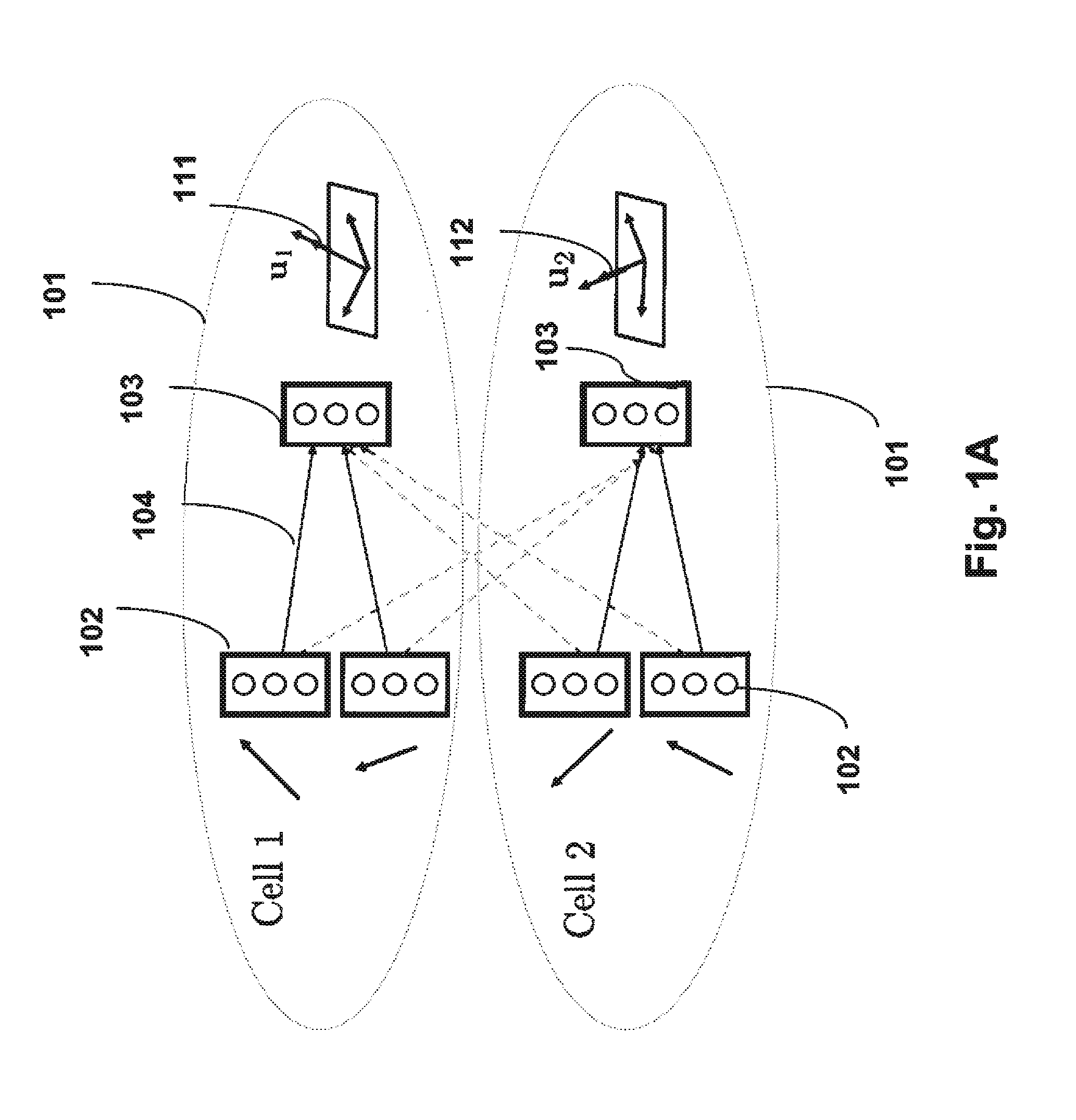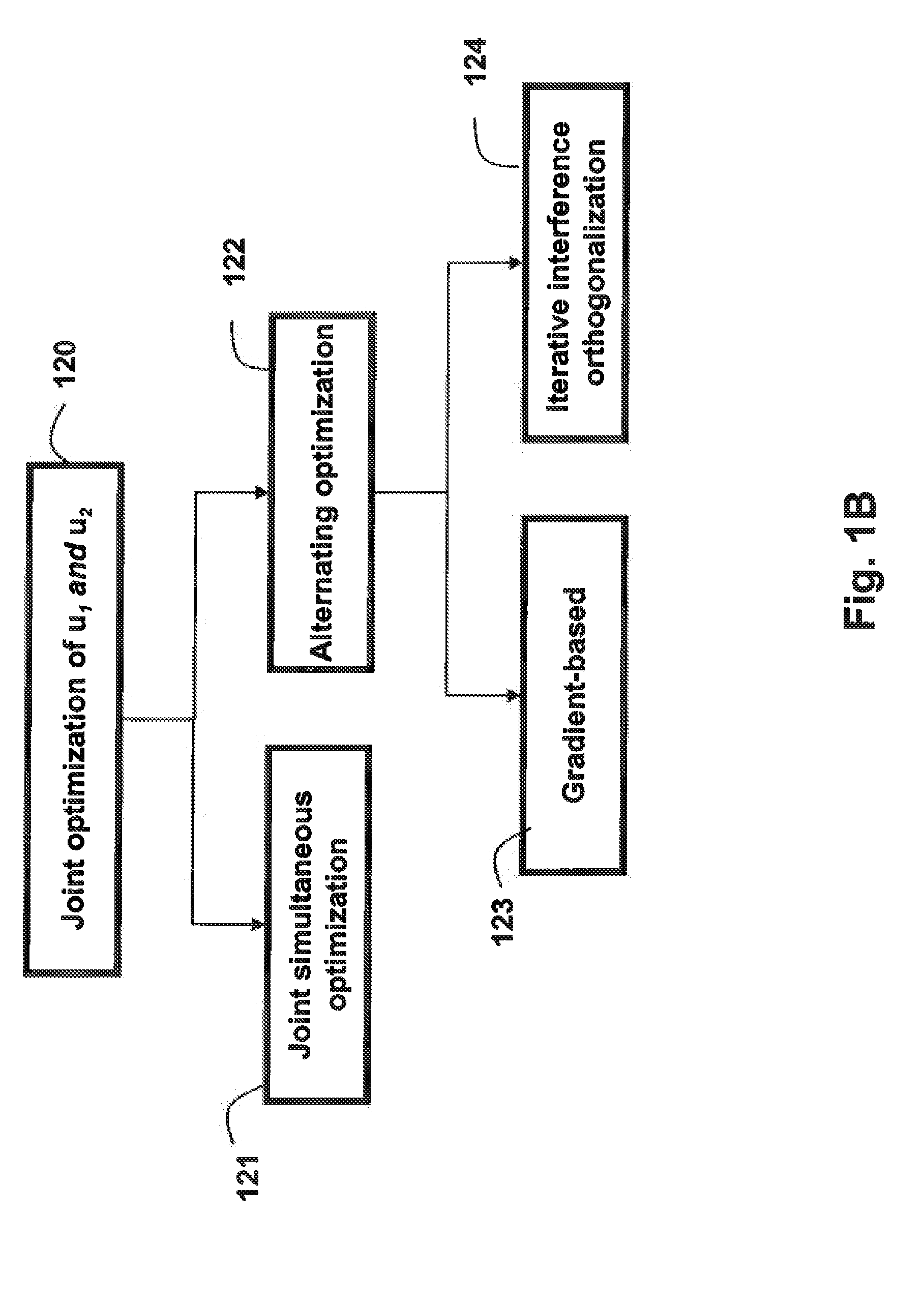Method for Reducing Interference in Multi-Cell Multi-User Wireless Networks
- Summary
- Abstract
- Description
- Claims
- Application Information
AI Technical Summary
Benefits of technology
Problems solved by technology
Method used
Image
Examples
Embodiment Construction
Signal Model
[0013]As shown in FIG. 1A, a wireless network includes two cells 101. There are K mobile stations (users) 102 and a base stations (BS) 103 in each cell. All mobile stations and base stations (BS) are equipped with M antennas. For simplicity, we describe the uplink 104 from the mobile station to the base station in detail. The downlink from the BS can be solved similarly due to the duality of linear interference alignment between the uplink and the downlink.
[0014]We consider K=M−1 mobile stations in each cell. Each mobile station transmits a data stream with precoding to the BS. The received signal y at the base station in the jth cell is written as
yj=∑i=1M-1∑k=12Hjk[i]vk[i]xk[i]+nj,j∈{1,2},
where Hjk[i]εCM×M is the channel matrix from mobile station i in cell k to cell j, vk[i] is a unit-norm beamforming vector for mobile station i in cell k, xk[i] is the transmitting stream from mobile station i in cell k, and nj:CN(0,I) is additive white Gaussian noise (AWGN) at BS j. T...
PUM
 Login to View More
Login to View More Abstract
Description
Claims
Application Information
 Login to View More
Login to View More - R&D
- Intellectual Property
- Life Sciences
- Materials
- Tech Scout
- Unparalleled Data Quality
- Higher Quality Content
- 60% Fewer Hallucinations
Browse by: Latest US Patents, China's latest patents, Technical Efficacy Thesaurus, Application Domain, Technology Topic, Popular Technical Reports.
© 2025 PatSnap. All rights reserved.Legal|Privacy policy|Modern Slavery Act Transparency Statement|Sitemap|About US| Contact US: help@patsnap.com



